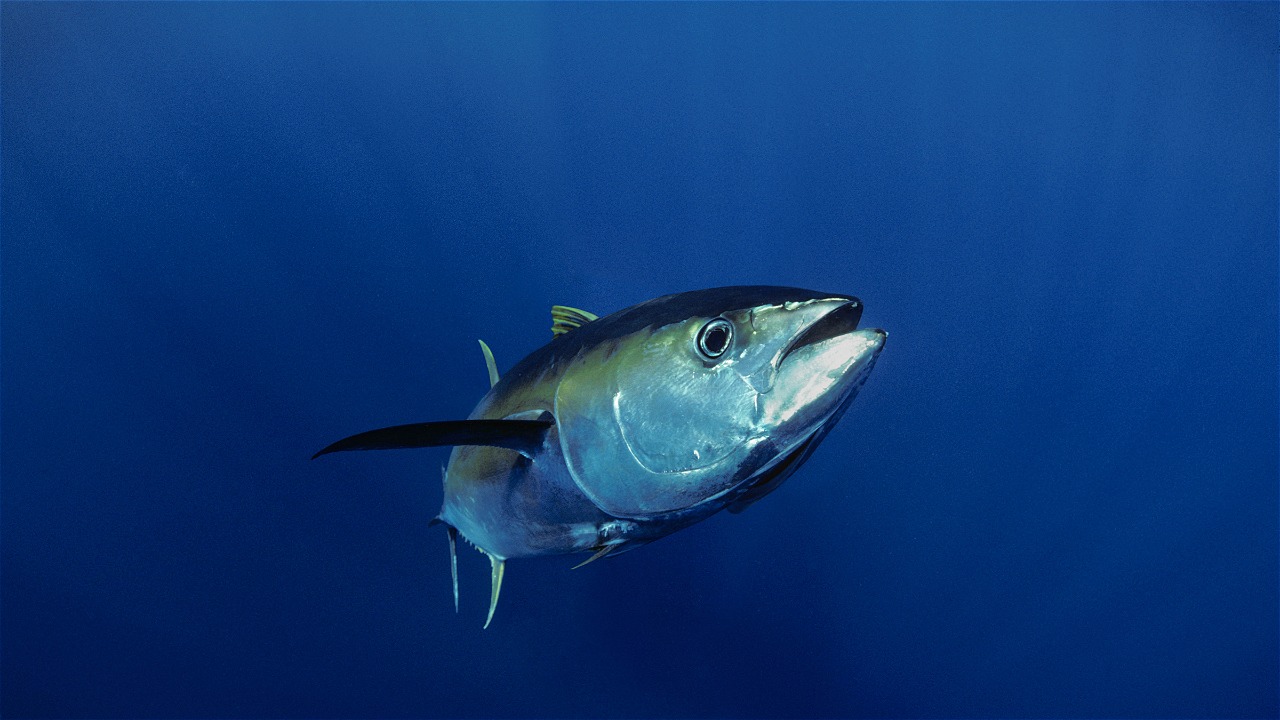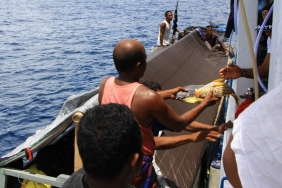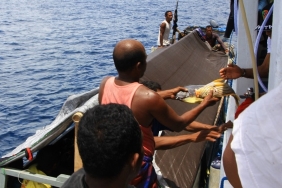ADULT SIZE TRENDS OF YELLOWFIN TUNA IN THE PACIFIC AND INDIAN OCEAN
By: Muhammad Yusuf
First maturity length, is one of the main references in determining the size of fish that is suitable for catching. Although in Indonesia there is no government regulation regarding the size of fish that can be caught or the size that can be caught (UBT) for each type of fish, UBT information should already be socialized based on research data. UBT information must always be updated because fish sizes change according to environmental conditions. One of the environmental conditions that can cause changes in the size of mature fish gonads for UBT reference is pressure due to overfishing. As populations are depleted by fishing mortality, there is a natural demand for continuing generations, so a fish species will mature faster naturally at a smaller size than the previous brood size.
One of the economically important fish species that has been studied at several sites in the Pacific and Indian yellowfin tuna sections is yellowfin tuna. Although there is no adequate data on the size of the first maturing gonads of yellowfin tuna in Indonesia, some of the results of these studies can represent conditions in Indonesia because of its geographical position between the Pacific and Indian yellowfin tuna. This data can provide an overview and preliminary information about the UBT of yellowfin tuna in Indonesia. The research data shows a decrease in the size of gonad mature adults from year to year. The following is the data of First maturity length (Lm) based on the size of the fork length or fork length (FL) from the results of several reproductive biology studies of yellowfin tuna caught in the Pacific and Indian yellowfin tuna, along with the researcher and the time of the study.
|
Year |
FL (cm) |
Researcher |
Location |
|
|
1989 |
140.00 |
Shung (1973) and Stequer and Marsac |
Indian Ocean |
|
|
1991 |
120.00 |
Hassani and Stequert |
Indian Ocean |
|
|
1991 |
115.00 |
McPherson |
Western Pacific Ocean |
|
|
1991 |
108.00 |
Bashmaker |
Western Indian Ocean |
|
|
1995 |
105.00 |
Itano |
Western Tropical Pacific Ocean |
|
|
1998 |
92.00 |
Schaefer |
Eastern Pacific Ocean |
|
|
1999 |
134.50 |
Froese |
Indian Ocean |
|
|
2000 |
134.50 |
Itano |
western tropical Pacific |
|
|
2000 |
104.00 |
Romena |
Indian Ocean |
|
|
2002 |
116.31 |
Chi-lu Sun, Wei-Ren Wang and Suzan Yeh |
Western Pacific |
|
|
2002 |
95.00 |
Prathibha rohit and K. Rammohan |
Andhara Coast, Indian Ocean
|
|
|
2003 |
110.00 |
Nootmorn, Yakoh and Kawises |
Eastern Indian Ocean |
|
|
2003 |
104.95 |
IOTC |
Indian Ocean |
|
|
2005 |
120.20 |
Fonteneau |
Indian Ocean |
|
|
2005 |
100.00 |
Zhu Guoping and Xu Liuxiong |
West-central Indian ocean
|
|
|
2008 |
100.00 |
Zhu et al and SPC |
Indian Ocean |
|
|
2009 |
100.00 |
IOTC |
Indian Ocean |
|
|
2010 |
77.80 |
IOTC |
Western and central Indian Ocean |
The number of yellowfin tuna samples studied varied from 495 to 3,535, with the length of the study also varying from a few months in the peak fishing season to 3 years. The measurement method is to observe the level of gonad maturity (TKG) of the sampled fish and several other biological character measurements. Generally, this research is carried out along the equator or tropical Pacific and Indian oceans, conditions are more or less the same as Indonesian marine waters. And most likely the yellowfin tuna studied are tuna that will and have migrated through Indonesian waters, namely from the Pacific in the eastern and northern parts of Indonesia to the Indies in the southern and western parts of Indonesia.
The data collected is the result of research conducted from 1989 - 2010. So there is a trend of data for 21 years. If the Lm size data is simply regressed by only taking the largest Lm size in the same year, the trend of Lm size can be seen in the following graphic image:
The decrease in Lm size can be seen in the above trendline graph and the positive regression value (0.3556) indicating a linear relationship of decreasing Lm from year to year. The decrease in broodstock size of yellowfin tuna can be caused by several factors including insufficient food, altered genetic traits, disease and exploitation pressure that reduces the population size so that it has to spawn earlier. The source of this paper has not examined these factors, but the most likely assumption is that the decrease in size is due to the massive tuna exploitation pressure that has occurred over the past two decades. Tuna fishing has become increasingly massive in all parts of the world's oceans, from near-coastal marine areas by small-scale fishers to the far reaches of the ocean by large tuna longline vessels. Tuna fishing is conducted almost every day of the year, most of which has not been limited in size, quantity and location. Based on this, the regulation of tuna fishing by the government is increasingly needed to maintain the sustainability of stocks and the sustainability of fishermen's livelihoods, especially in Indonesia.
Contact: Muhammad Yusuf, Fisheries Science and Training Coordinator, WWF-Indonesia - myusuf@wwf.or.id
.
Source of article:
Source of article: WWF-Indonesia
David G. Itano, 1995. Reproductive Biology of Yellowfin Tuna {Thunnus albacares),in Hawaiian Waters and the Western Tropical Pacific Ocean. Working paper for the 5 th Meeting of the Western Pacific Yellowfin Tuna Research Group, Noumea, New Caledonia, August 21-23, 1995. University of Hawaii Pelagic Fisheries Research Program - Project #2060.
Iker Zudaire, H. Murua, M. Grande, M. Korta, H. Arrizabalaga, J. Areso, A. Delgado Molina. 2010.
Prathibha Rohit and K. Rammohan, 2009.
Praulai Nootmorn, Anchalee Yakoh and Kannokwan Kawises, 2005. Reproductive Biology Of Yellowfin Tuna In The Eastern Indian Ocean. Andaman Sea Fisheries Research and Development Center 77 Tumbon Vichit, Maung District, Phuket 83000, Thailand. IOTC-2005-WPTT-14.
Zhu Guoping and XuLiuxiong, 2005. Reproductive Biology of Yeilowfin Tuna T. albacares in the West-Central Indian Ocean. College of Marine Science and Technology, Shanghai Ocean University, Shanghai 200090, P. R. China.





